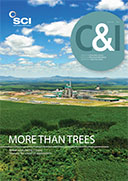The exterior cladding of the Grenfell Tower in West London has come in for much criticism following the blaze in June, which left 80 people dead. Since the fire, the UK Building Research Establishment (BRE) has been testing the combustibility of cladding material from buildings around the country. As of 3 July, all 181 samples had failed.
‘Every failed test means the panels are unlikely to be compliant with the limited combustibility requirement of the building regulations guidance,’ Communities Secretary Sajid Javid told the House of Commons: ‘For use of the panels to be safe landlords need to be confident the whole wall system has been tested and shown to be safe. We are not aware of any such system having passed the necessary tests.’
In response, the government asked the independent panel set up to investigate cladding materials to test whole systems. BRE will assess six systems combining three types of aluminium composite material panels, three core filler materials (unmodified polyethylene, fire-retardant polyethylene, and non-combustible mineral) and two insulation materials (rigid polyisocyanurate foam or non-combustible mineral wool). They will be tested against the BS 8414 standard, whereby a 9m tall demonstration wall with a complete cladding system is subjected to a fire replicating one breaking out of a flat window.
It remains unclear whether the BS 8414 test was conducted on Grenfell Tower’s cladding system. The Department for Communities and Local Government, responsible for building regulations, has indicated that the Grenfell Tower cladding did not comply - without giving details. Main contractor Rydon Maintenance states that the materials met all building, fire and health & safety standards, and the Royal Borough of Kensington & Chelsea building control department issued a completion notice.
Built in 1974, the 24-storey high Grenfell Tower block underwent a £9 m refurbishment in 2016. The new cladding involved fixing thermal insulation to the concrete façade made from Celotex RS5000, a rigid polyisocyanurate foam. This was then covered with pre-painted aluminium sheets filled with a polyethylene core (Reynobond PE).
Reynobond PE was supplied by Arconic. It states: ‘Current regulations within the US, Europe and the UK permit the use of aluminium composite material in various architectural applications. Our product is one component in the overall cladding system; we don’t control the overall system or its compliance.’ It has now withdrawn the product for high-rise applications. Celotex has also now withdrawn its product for use in buildings over 18m, but claims its foam has the highest, ‘class 0’, fire resistance rating.
Arconic also sells Reynobond FR, which has a fire-retardant mineral core with higher resistance to fire. These panels are more expensive. The BBC says it has seen documents suggesting the original refurbishment plan was for zinc cladding, but this proposal was changed to an aluminium composite, saving nearly £300,000.
‘Aluminium has high thermal conductivity – so the cladding itself could have heated up very quickly, failing to prevent the fire from travelling through the windows and up the exterior of the block from one storey to another,’ says Kostas Tsavdaridis, associate professor of structural engineering at the University of Leeds: ‘Some materials in facades act as significant fire loads: although theoretically they are fire-resistant, in most cases they are high-temperature resistant instead of fire-resistant.’ Zinc has a lower thermal conductivity than aluminium, meaning that heat would travel slower through the material.
As well as the material used in cladding, Tsavdaridis says it is important to consider how the system is connected to the building. Usually this is through some type of grid made of steel studs. ‘If the steel studs buckle, then the panels can be exposed to the fire,’ he explains. ‘Aluminium bends and this creates voids or holes that can transfer the heat.’
Fire regulations need to be updated urgently, he believes. ‘Not only the type of panels used, but how they are going to be used, how they are tested, how they are to be installed. Regulations need to adapt to new applications but this is not happening.’
The UK’s Fire Protection Agency (FPA) agrees there is a need for a full review of building fire regulations, 10 years after the last review. It is ‘greatly concerned’ at combustible material introduced in the refurbishment of older buildings, and through modern methods of construction.





